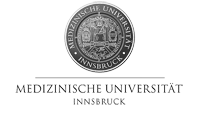|
|
 |
Department of Paediatrics, University Medical Centre Maribor, Slovenia, Ljubljanska 5, Maribor, Slovenia
Objectives: Essential hypertension (EH), identifiable in children, is associated with cardiovascular (CV) diseases in adulthood. The aim of our study was to evaluate the presence of some traditional and non-traditional CV risk factors in our children and young adults with EH in the search for additional CV risk. The prevalence of metabolic syndrome (MS) was also investigated.
Methods: A total of 104 children and young adults, diagnosed with EH, were included in our study. They were compared with a control group of 50 healthy children, matched for sex and age, with regards to specific aspects in the history, body mass index (BMI), waist–hip ratio, full blood count, CRP, serum cholesterol, HDL cholesterol, LDL cholesterol, triglycerides, uric acid, glucose, insulin, fibrinogen, homocysteine, apolipoprotein A1, apolipoprotein B and lipoprotein (a). In addition, the prevalence of MS was calculated. MS was defined as having central obesity and any two of the other four MS components according to the International Diabetes Federation, tailored for children.
Results: The differences in values of BMI, CRP, platelets, triglycerides, uric acid, apolipoprotein A1, apolipoprotein B and homocysteine between the hypertensive patients and the controls were statistically significant. In all hypertensives positive family history of hypertension in the first or second generation was revealed. Overweight (BMI >90th percentile for age and sex) was identified in 41.3%, obesity (BMI >97th percentile) in 23.1%, abnormal glucose homeostasis in 4.8%, high serum triglycerides in 25.9% and low HDL in 18.3% of the hypertensives. MS was present in 14.4% of these children and in 2% of our controls.
Conclusion: We demonstrated that children and young adults with EH differ from the population of healthy children in some specific CV risk factors and in the prevalence of MS, and are therefore at an increased CV risk.
